Today Current Affairs: 12th July 2021 for UPSC IAS exams, State PSC exams, SSC CGL, State SSC, RRB, Railways, Banking Exam & IBPS, etc
Table of Contents
State’s Population Policy For 2021-2030:UP
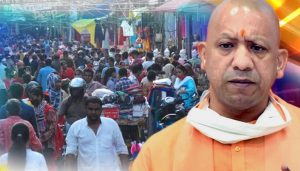
Uttar Pradesh Chief Minister Yogi Adityanath launched the State’s population policy for 2021-2030.
The new policy aims at
- decreasing the total fertility rate from 2.7 to 2.1 by 2026 and 1.7 by 2030,
- increase modern contraceptive prevalence rate from 31.7% to 45% by 2026 and 52% by 2030,
- increase male methods of contraception use from 10.8% to 15.1% by 2026 and 16.4% by 2030,
- decrease maternal mortality rate from 197 to 150 to 98, and infant mortality rate from 43 to 32 to 22, and under 5 infant mortality rate from 47 to 35 to 25.
- Targeting stabilisation, the draft of the policy also said the State would attempt to maintain a balance of population among the various communities.
Lemru Elephant Reserve: Chhattisgarh:
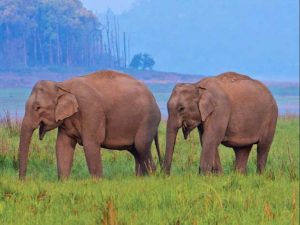
The Chhattisgarh government has proposed to reduce the area of Lemru Elephant Reserve from 1,995 sq km to 450 sq km.
- The Centre gave its approval in 2007 for the creation of the 450 sq km Lemru Elephant Reserve and in 2019, the state government decided to increase the area to 1,995 sq km.
- The reserve is located in the Cobra district of Chhattisgarh.
- The reserve is aiming at reducing human-animal conflict and destruction of property in addition to providing a permanent habitat to the elephants.
- Earlier, the state government notified the reserve (Conservation Reserve) in October 2020 under Section 36A of the Wild Life (Protection) Act, 1972 (WLPA).
- Section 36A has a special provision that gives the Union government a say in the process of notification in case the land to be notified as conservation reserve has areas belonging to the Centre.
- Elephant reserves are not recognised under the WLPA.
- The area proposed under the reserve is part of the Hasdeo Aranya forests, a very diverse biozone that is also rich in coal deposits.
- Of 22 coal blocks in the area, 7 have already been allotted with mines running in three, and in the process of being established in the other four.
- The biggest challenge in increasing the reserve area was that several coal mines would become unusable.
Conservation Plans For Cities Along Rivers:
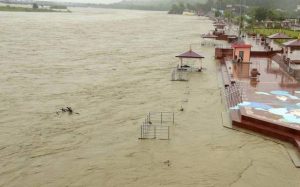
A policy document from National Mission for Clean Ganga (NMCG) has proposed that cities situated on river banks should incorporate river conservation plans when they prepare their Master Plans.
- The recommendations are currently for towns that are on the main stem of the river Ganga which are in five States — Uttarakhand, Uttar Pradesh, Bihar, Jharkhand, West Bengal.
- NMCG is the implementation wing of National Ganga Council (set in 2016; which replaced the National Ganga River Basin Authority (NGRBA)). Along with its state counterpart organizations, NMCG implements the Namami Gange Programme
- On the need for river-sensitive plans that must be practical (as envisaged in the National Water Policy).
- There should be a systematic rehabilitation plan to remove encroachment that emphasizes on alternative livelihood options along with a proper relocation strategy.
- Planners should make every attempt to engage stakeholders (encroacher, land owners) in order to develop empathetic and humane solutions.
- The plan must also clarify on land ownership. Ascertaining the land ownership in these areas is important to avoid legal complications while the Plan is being implemented.
- A key aspect of conserving and protecting river and riverine resources involves increasing green cover in the vicinity of the river by creating green buffers, removing concrete structures and employing “green infrastructure.”
Naga Peace Talks:
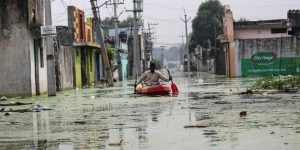
The Nagaland Government appealed to all Naga political groups and extremist groups to cooperate in establishing unity, reconciliation and peace in the region.
- The peace process between the central government and two sets of the Naga extremist groups has been delaying for more than 23 years.
- Nagas are a hill people who are estimated to number about 2.5 million (1.8 million in Nagaland, 0.6 million in Manipur and 0.1 million in Arunachal states) and living in the remote and mountainous country between the Indian state of Assam and Burma.
- The key demand of Naga groups has been a Greater Nagalim (sovereign statehood) i.e redrawing of boundaries to bring all Naga-inhabited areas in the Northeast under one administrative umbrella.
- It includes various parts of Arunachal Pradesh, Manipur, Assam and Myanmar as well.
- The demand also includes the separate Naga Yezabo (Constitution) and Naga national flag.
- The 2015 agreement apparently made the peace process inclusive but it created suspicion about the central government exploiting divisions within the Nagas on tribal and geopolitical lines.
- The issue of integration of contiguous Naga-inhabited areas of Manipur, Assam and Arunachal Pradesh in view of the demand for territorial unification of ‘Greater Nagalim’ will trigger violent clashes in the different affected states.
- Another major hindrance to the peace process in Nagaland is the existence of more than one organisation, each claiming to be representative of the Nagas.
First Private LNG Facility Plant At Nagpur.:
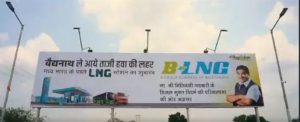
Minister for Road Transport and Highways Nitin Gadkari inaugurated the country’s first Private LNG Facility plant at Nagpur.
- Liquefied natural gas, or LNG, is natural gas in its liquid form. When natural gas is cooled to minus 259 degrees Fahrenheit (-161 degrees Celsius), it becomes a clear, colorless, odorless liquid.
- During the process known as liquefaction, natural gas is cooled below its boiling point, removing most of these compounds. The remaining natural gas is primarily methane with only small amounts of other hydrocarbons.
- Properties: LNG is neither corrosive nor toxic. Natural gas is primarily methane, with low concentrations of other hydrocarbons, water, carbon dioxide, nitrogen, oxygen and some sulfur compounds. LNG weighs less than half the weight of water so it will float if spilled on water.
- Liquification is done for easy storage and transportation. LNG achieves a higher reduction in volume than CNG.
- A majority of the world’s LNG supply comes from countries with large natural gas reserves.
Covid-19 Vaccine Soberana 2:
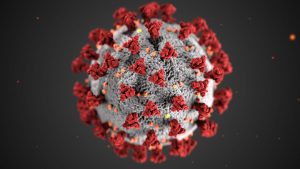
Cuba has said its homegrown Covid-19 vaccine Soberana 2 (Sovereign 2), when delivered with a booster shot of Soberana Plus, is about 91 percent effective against symptomatic Covid-19 cases as demonstrated in its late stage clinical trials.
- If approved, Cuba will become the first Latin American country to manufacture and produce a vaccine against Covid-19.
- The Soberana 2 is delivered through a three dose regimen. Two shots of Soberana 2 and one of Soberana Plus, when taken in a 0-28-56 day regimen, have an efficacy of 91.2 percent, the Cuban government’s Covid-19 task force announced
- It is a protein vaccine, which is to say that these vaccines are made up of a protein derived from the virus, which then binds to human cells to trigger an immune response.
NASA’s VIPER Mission:

NASA has announced that it will launch its Volatiles Investigating Polar Exploration Rover, or VIPER, in 2023.
- NASA is undertaking the mission to understand if it is possible for human life to sustain there, by using locally available resources.
About the mission:
- VIPER is a mobile robot.
- It is the first resource mapping mission on any other celestial body.
- NASA’s Commercial Lunar Payload Services (CLPS) will be providing the launch vehicle and lander for what’s going to be a 100-day mission.
Objectives of the mission:
- To explore the Moon’s South Pole region.
- Help create lunar resource maps.
- Evaluate the concentration of water as well as other potential resources on its surface
Five New Portals On Ayush Sector:
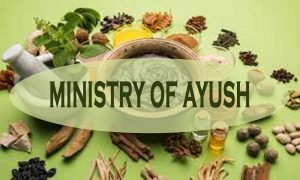
Five new portals on Ayush Sector have been launched – CTRI (Clinical Trial Registry of India), RMIS (Research Management Information System), SAHI (Showcase of Ayurveda Historical Imprints), AMAR (Ayush Manuscripts Advanced Repository), and e-Medha (electronic Medical Heritage Accession).
New Portals:
Clinical Trial Registry of India (CTRI): It is a primary Register of Clinical Trials under the World Health Organization’s International Clinical Trials Registry Platform.
- Creation of Ayurveda Data Set in CTRI facilitates the usage of Ayurveda Terminologies to record clinical study based on Ayurveda interventions.
- Clinical study is research that studies new tests and treatments and evaluates their effects on human health outcomes.
Research Management Information System (RMIS): It will be a one stop solution for Research and Development in Ayurveda based studies.
- Showcase of Ayurveda Historical Imprints (SAHI): It showcases inscriptions, Archeo-botanical Information, Sculptures, classical texts and advanced Archeo Genetic studies.
- It will be of tremendous use in understanding of Indian Knowledge system with a focus on indigenous health care practices.
Ayush Manuscripts Advanced Repository (AMAR): It has digitized information on rare and hard to find Manuscripts and catalogues of Ayurveda, Yoga, Unani, Siddha, Sowa Rigpa in libraries or in individual collections across India or in other parts of the world.
e-Medha (electronic Medical Heritage Accession): Online public access catalog for more than 12000 Indian medical heritage books through NIC’s (National Informatics Centre) e-granthalaya platform.
e-Granthalaya: It is a Digital Platform developed by NIC for Government Libraries for Automation of In-house activities as well as member services and Networking for resource sharing.
India Industrial Land Bank:

The India Industrial Land Bank (IILB), a GIS-based portal, has seen a 30% increase in page views each month since April 2021.
India Industrial Land Bank (IILB):
- Department for Promotion of Industry & Internal Trade (DPIIT) has developed IILB portal, a GIS-enabled database of industrial areas/clusters across the country to adopt a committed approach towards resource optimization, industrial upgradation and sustainability.
- The portal serves as a one-stop solution to the free and easy accessibility of all industrial information including availability of raw material, agriculture, horticulture, minerals, natural resources; distance from key logistic nodes; layers of terrain and urban infrastructure.
- It aims to provide information on available land for prospective investors looking at setting up units in the Country.
- It also provides links to State GIS Portals and State Land Banks.




